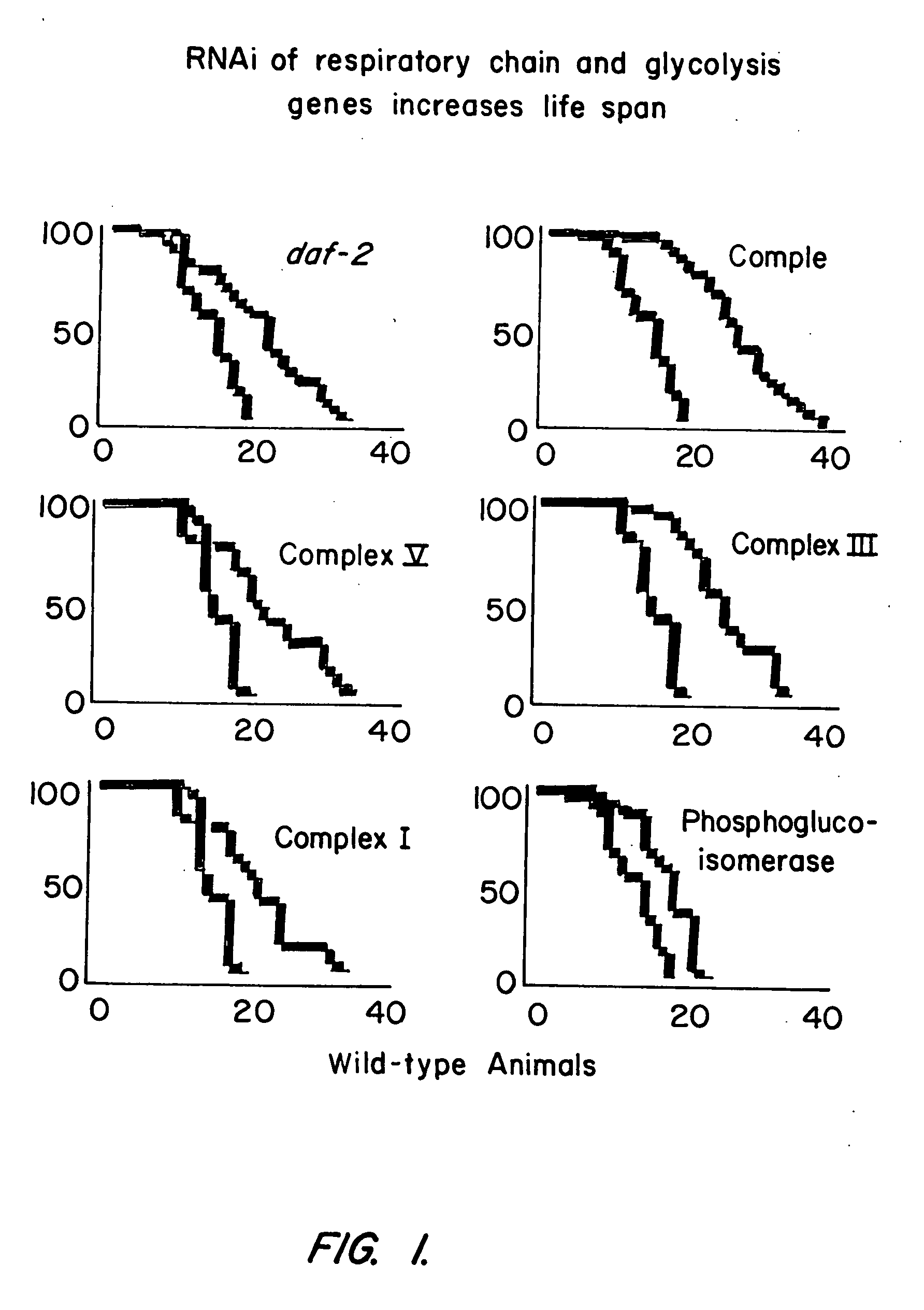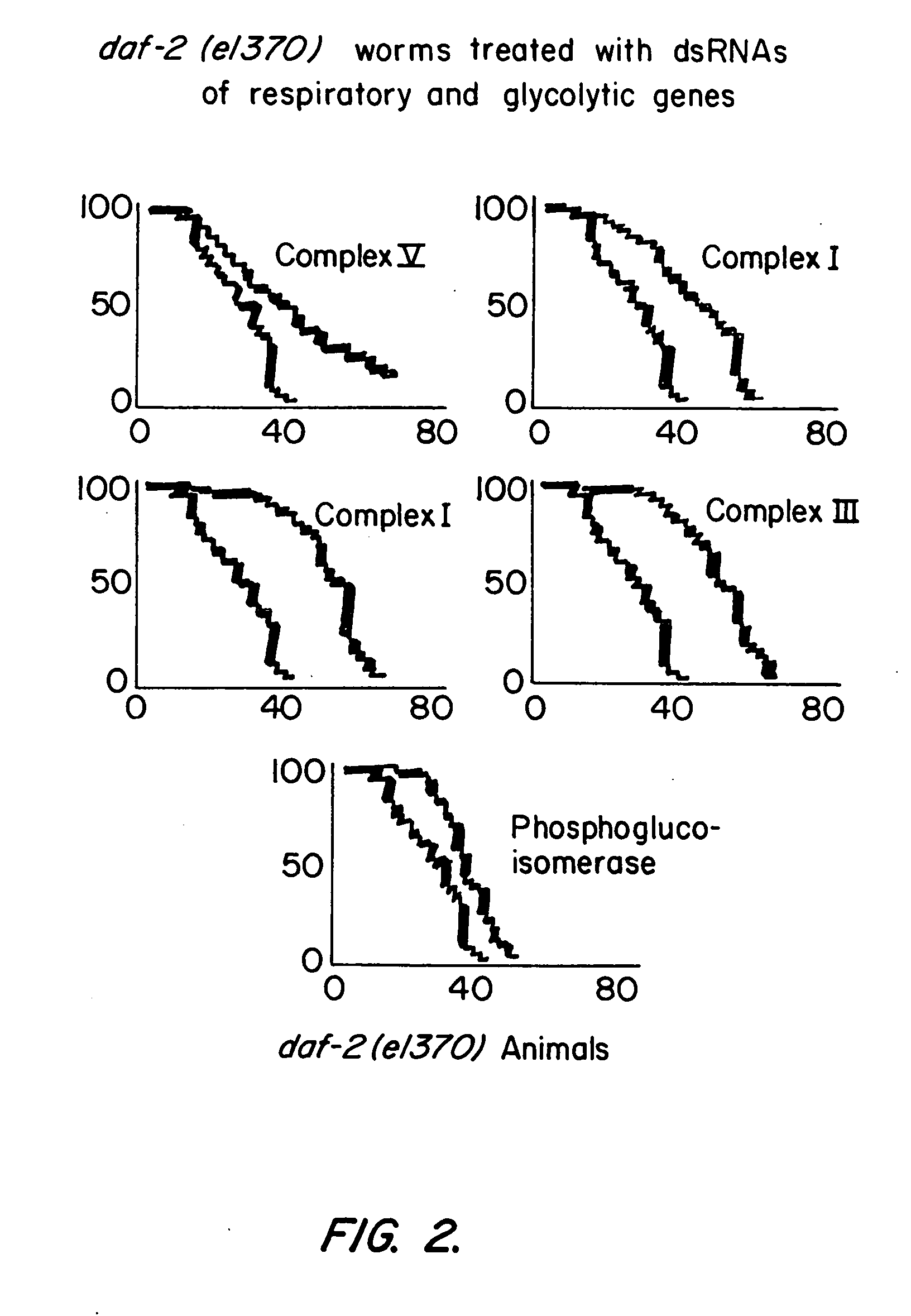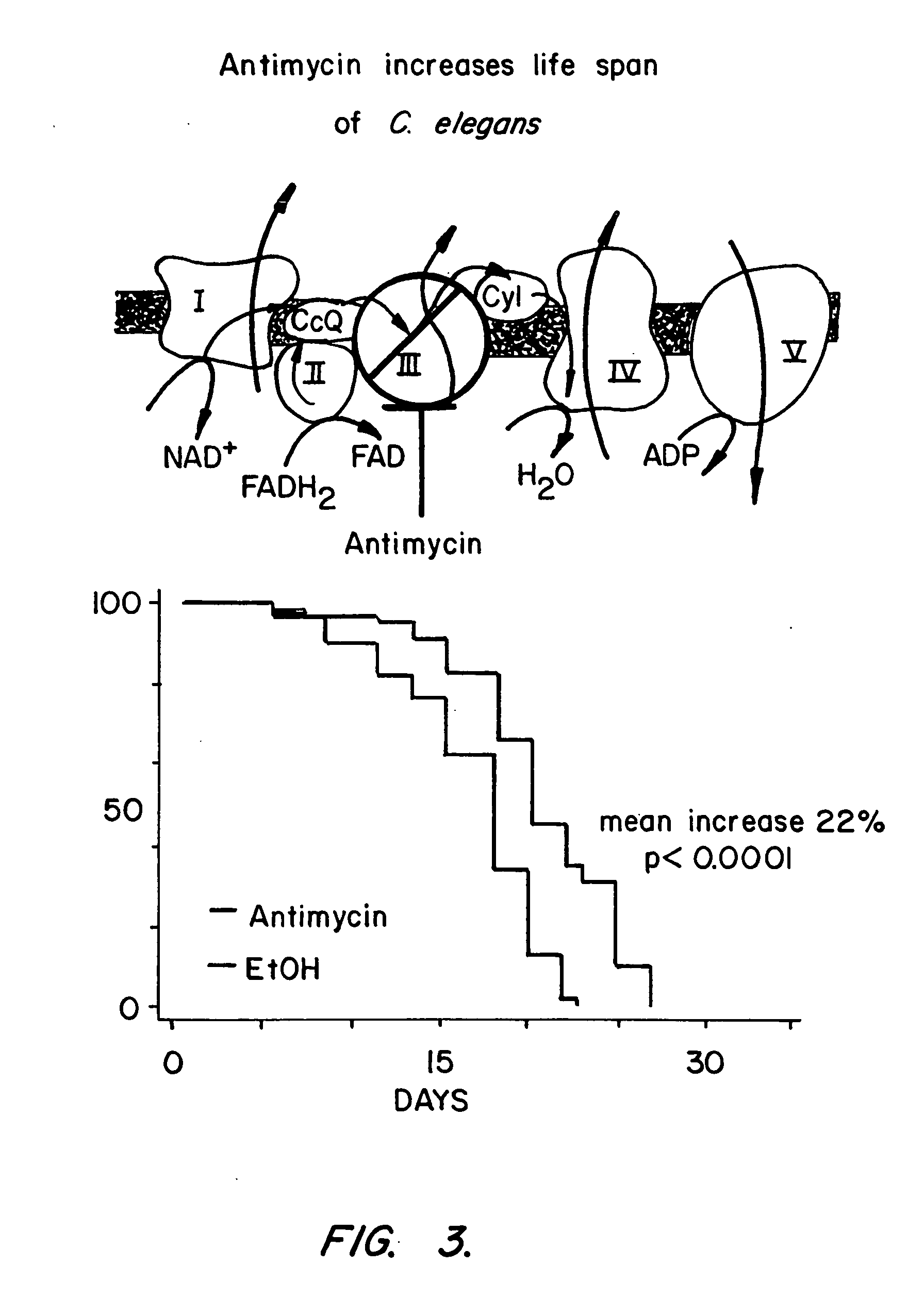Eukaryotic genes involved in adult lifespan regulation
a technology of eukaryotic genes and lifespan regulation, applied in the field of eukaryotic genes involved in adult lifespan regulation, can solve the problems of cumbersome identification of interesting mutants, labor-intensive classical genetic methods, and time-consuming classical genetic screening
- Summary
- Abstract
- Description
- Claims
- Application Information
AI Technical Summary
Benefits of technology
Problems solved by technology
Method used
Image
Examples
example 1
Obiective Characteristics of Aging Identified Using Nomarski Differential Interference Contrast Microscopy
A. Introduction
[0247] In this study, the tissues of wild-type animals were compared to those of long-lived and short-lived insulin / IGF-I signaling mutants during the course of their lives. We have found that Nomarski differential interference contrast (DIC) microscopy provides an effective, rapid and convenient means of visualizing many features of tissue aging. Using this method, we have found that extensive tissue deterioration takes place during aging, not only in the post-mitotic somatic tissues of the animal, but also in a mitotic lineage, the germline. Our findings indicate that insulin / IGF-1 signaling influences lifespan by changing the rate at which the tissues age, and that this pathway governs the aging not only of the post-mitotic somatic cells, but mitotic lineages as well. Interestingly, the majority of animals we have examined whose adult lifespans were shortene...
example 2
C. elegans Mutants That Extend Lifespan
[0273] Using libraries representing double stranded RNAs from Chromosome I (Fraser et al., Nature 408:325-330 (2000)) and Chromosome II, genes that extend the lifespan of C. elegans when inhibited were identified. The gene encoded include mitochondrial respiratory proteins, glycolytic proteins, a GTPase, and three genes of unknown function.
A. Screen for Lifespan Enhancing Genes.
[0274] Animals were cultured on bacterial strains expressing double stranded RNA in a bacterial feeding library. (Kamath et al., Genome Biol. 2:research0002.1-0002.10 (2000); Fraser et al., Nature 408:325-330 (2000)). The library was made as follows. The sequence of the C. elegans genome is known and has been used to identify predicted genes. DNA fragments corresponding to predicted genes were cloned into a feeding vector L4440 between two T7 bacterial promoters in inverted orientation. The library was then transformed into a bacterial strain carrying IPTG-inducible ...
example 3
C. elegans Mutants That Shorten Lifespan
[0307] Using the Chromosome I library described previously, C. elegans were fed bacteria expressing dsRNA and screened for shortened lifespan. A cursory examination using objective aging criteria allowed immediate discarding of 6 out of 7 short-lived RNAi-treated strains from further consideration as possible progeric animals. Moreover, the one remaining clone had a dramatic phenocopy of normal aging.
[0308] The progeric RNAi candidate encoded a homologue of HSF (heat-shock factor), a transcription factor that activates expression of heat-shock genes in response to heat shock and oxidative stress. The HSf-1 gene is Y53C10.12 and the accession number is CAA22146. As heat shock factor genes are highly conserved, this family of genes therefore is shown to be involved in aging, including human homologs of HSF family genes, e.g., HSF-1.
[0309] In a second experiment, over-expression of HSf-1 gene in C. elegans caused an increased adult lifespan. T...
PUM
| Property | Measurement | Unit |
|---|---|---|
| molecular weight | aaaaa | aaaaa |
| molecular weight | aaaaa | aaaaa |
| molecular weight | aaaaa | aaaaa |
Abstract
Description
Claims
Application Information
 Login to View More
Login to View More - R&D
- Intellectual Property
- Life Sciences
- Materials
- Tech Scout
- Unparalleled Data Quality
- Higher Quality Content
- 60% Fewer Hallucinations
Browse by: Latest US Patents, China's latest patents, Technical Efficacy Thesaurus, Application Domain, Technology Topic, Popular Technical Reports.
© 2025 PatSnap. All rights reserved.Legal|Privacy policy|Modern Slavery Act Transparency Statement|Sitemap|About US| Contact US: help@patsnap.com



